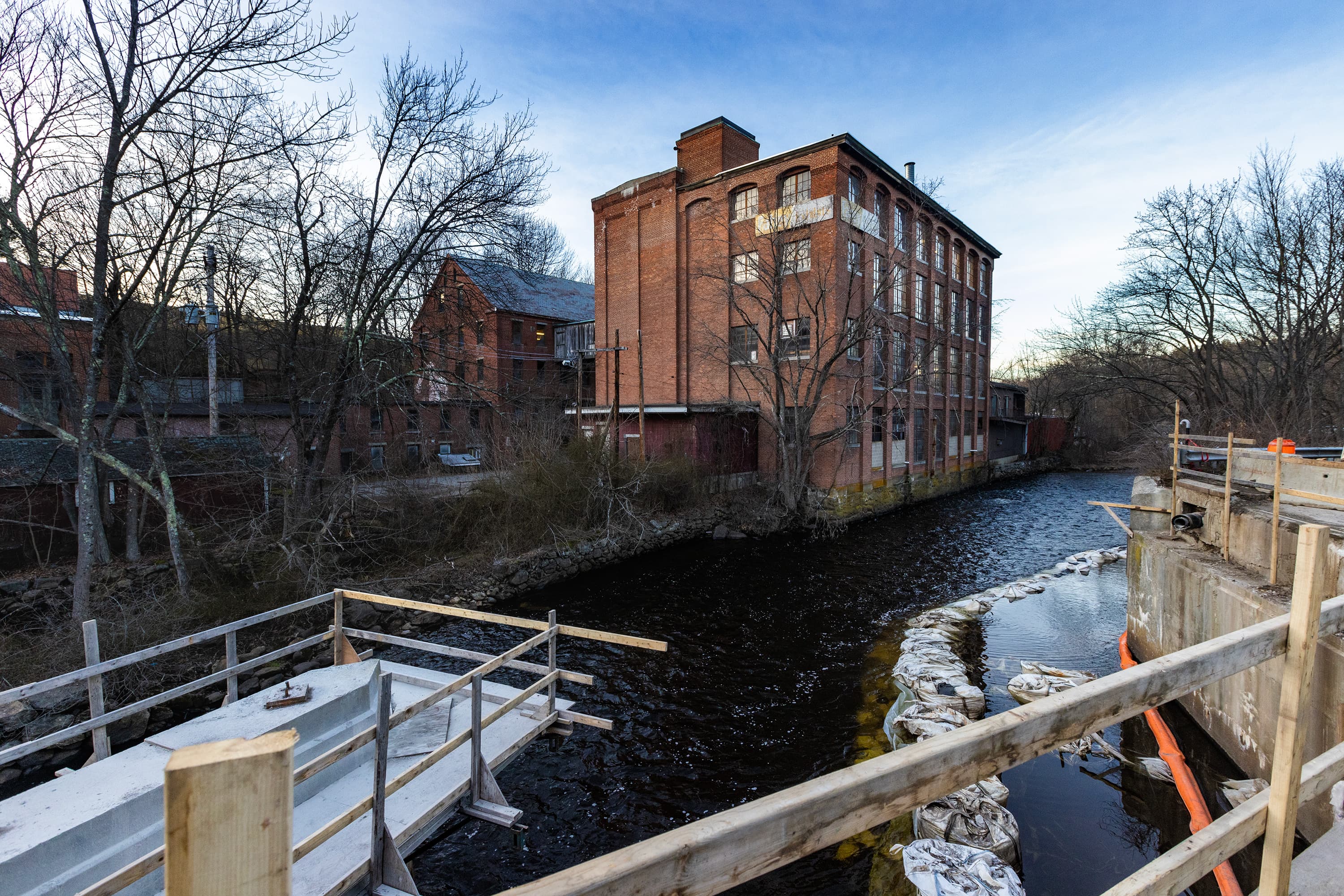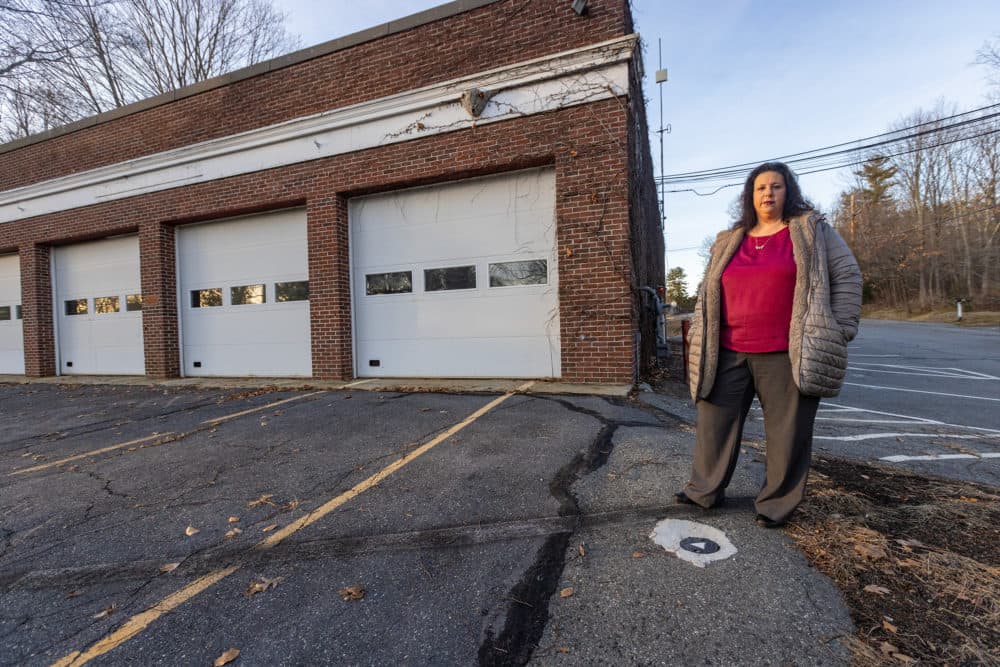Advertisement
Private well owners stuck with costs to treat 'forever chemicals'
Play
Bill Wachur thought he was just being cautious when he decided to test his well water for PFAS.
His home in Stow, Massachusetts, was nowhere near the town's old fire station or the former mill — sites where the toxic chemicals had seeped into the small town's groundwater.
But Wachur had heard that PFAS had been linked to serious health problems , like liver disease and kidney cancer. So he figured, why not test the water, just to be safe?
"I felt that our water was fine," he said. "It was just kind of, you know, checking the boxes."
The results, however, shocked and scared Wachur. His water tested at 52 parts per trillion, more than twice the state's public drinking water standard.
"Now you're anxious because, I mean, you've lived here for 37 years, and you've brought up two children here," he said. "You don't know what the long-term health implications are for all those years of drinking maybe tainted water.
"And after that it was kind of a scramble to figure out — what are you going to do?"
Clean water advocates say Wachur's story is not uncommon. For decades, PFAS chemicals have been used in consumer products, industry and firefighting foam, and contamination is widespread.
More than half a million people in Massachusetts get their drinking water from private wells. But, neither the state nor the federal government regulate PFAS in these wells. (The state had a program to test wells in certain towns for PFAS, but that's been completed.)
Boards of health can set local regulations for PFAS and other contaminants, but rules vary widely from town to town. Stow, for instance, has some guidance but no mandates. These gaps leave residents with private wells vulnerable to PFAS contamination.
"You don't know what the long-term health implications are for all those years of drinking maybe tainted water."
Bill Wachur
Wachur wasn’t sure where to turn. He searched the internet and exchanged emails with a sympathetic PFAS researcher at Duke.
"A lot of people have private wells," Wachur said. "If they want something done right away, they're going to have to act on their own."
But, a full-house filtration system can cost thousands of dollars. Wachur found a smaller filter to install under his kitchen sink. It cost him close to $600.
"It is a very confusing system and it really leads to a lot of regional inequities," said Amie Shei, president and CEO of the Health Foundation of Central Massachusetts , an advocacy group focused on health equity. There are 85 communities in Massachusetts where at least 60% of residents get their water from private wells. Most of these towns are in rural areas.
"Those who live in urban areas have access to public water infrastructure — all of those systems are routinely tested and maintained," Shei said. "In more rural parts of the state, there is not public water infrastructure, very few protections, lots of risk for contamination as a result of poorly maintained systems."
'They had to create a new color for us'
In Stow, every single home relies on private well water. This makes it difficult to grasp the full extent of PFAS contamination in the town.
In her office, Stow Town Administrator Denise Dembkoski looked over a town map spread across a table. The map was color-coded from green to yellow to red to show the severity of known PFAS contamination.
Dembkoski pointed out a couple spots colored purple. "We had levels over 90 parts per trillion, so they had to create a new color for us," she said.

Dembkoski taps one hot spot: the site of the old fire station. Activity on the site contaminated the drinking water supply for nearby homes and buildings — including town hall, which is why its drinking fountains are covered with "out of order" signs. Because Stow owns the fire station, the town is paying for testing and filters for the wells it contaminated.
But most of the map isn’t colored in. Not because there’s no PFAS, but because people haven’t reported their results, or haven't tested at all. Testing a well for PFAS costs a couple hundred dollars — more than some people can afford, or want to pay.
"The majority of our map is white, because people have not tested," Dembkoski said. "And what if they do test — then what happens? Some people can't afford a $5,000 treatment system."
"And what if they do test — then what happens? Some people can't afford a $5,000 treatment system."
Denise Dembkoski
There’s another reason private well owners are reluctant to test for PFAS: They don't want to lower their home value, or — maybe even worse — be held liable for contaminating their neighbor's well.
"There's that hesitancy, and there are people concerned about that," said Jennifer Pederson, executive director of Massachusetts Water Works Association, an industry group. Pederson is pretty knowledgeable about PFAS and drinking water, and she's also a private well owner. She said she hasn't tested her well for PFAS because she's "not quite certain about the liability that might be incurred by doing so."
It's a valid concern. If someone's farm or field or house or septic tank is discovered to be a source of PFAS pollution, the owner might have to pay for testing, cleanup and treatment systems for affected homes. According to MassDEP, "the potential costs could range from tens of thousands of dollars (for a relatively simple site) up to hundreds of thousands, or more."

Stow resident Allan Fierce lives a few houses away from Bill Wachur and had his private well tested, too. He was relieved when the results came back at 2 parts per trillion — well below the state advisory level for public water systems. But he was still troubled that his water had any PFAS at all.
"I still have no idea where the source is," Fierce said. But "the more I learn about PFAS, the more I learn that we might be the source ourselves."
Some towns are forcing people to test. The Harvard board of health requires residents to test for PFAS before selling their house, and Stow’s board of heath is considering doing the same.
Clean water advocate Amie Shei said the state should regulate private wells like private septic systems.
"I have always found it so interesting that the state regulates the wastewater that leaves somebody's home, and yet it does not regulate the water that is entering a home and being consumed, which has a more direct impact on health," she said.
Proposed PFAS bills in the state Legislature do include provisions for private well owners, including one that would allow them to access money from a to-be-created PFAS trust fund, for instance. Another would require the state to develop minimum requirements for private wells . Such legislation will likely face pushback from homeowners who don’t want the government meddling with their private property.
Fierce said he understands people's concerns about property values and liability. But he doesn't regret testing his well and thinks more private well owners should , too.
"Many of the people in Stow have young children, and they're the ones that really need to be concerned," he said. "Not so much about their property values going down a few thousand dollars — it's much more important to be safe."
This segment aired on February 15, 2023.
